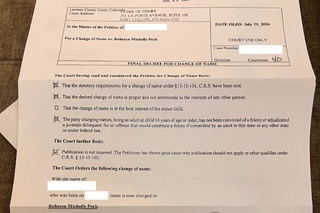Transition
October 18, 2024
Names are emotional things. They mean a lot to a person, even though that person may have been given that name before they were even aware of it. We inhabit that name, making it a part of our identity.
But what happens when you need to change that name? When that name no longer fits the person you are? This is an issue faced by many, but especially those of us in the transgender community. Even if you are otherwise happy with your name, since in most languages names often have very strong gendered connotations, it is not uncommon for transgender people to want to change their name to better match their gender identity.
Here’s the process I used to change my name and markers, where possible, with the following services. A lot of this is based on my notes I made during the process. In posting this, I am hoping to help others who are changing their names know how to better navigate this byzantine process.
Read More
Javascript
March 12, 2017
AngularJS’s built-in ngResource is
a great tool for natively supporting REST APIs in your Angular application. But
what happens when you need to support something besides a simple call that
retrieves a list of JSON objects? You quickly run into the limits of ngResource.
Here’s a great case where you might need to do something more complex: paging.
Say you want to get a list of objects, and there’s 10,000 or so of them. You
don’t want to send 10,000 objects to your frontend app. You want to send a
portion of them, but you still need to indicate to the app that there are more.
Surprisingly, considering how widespread this pattern is in web development,
there does not seem to be a native way to accomplish this. But you can extend
ngResource. Here’s how I did it.
Read More
Javascript
April 14, 2016
So I’ve been working on a project recently where I needed a simple predicate
builder. Basically I needed a way to allow users to build a somewhat complex
search using a GUI. And since we are using AngularJS on this project, here’s a
quick article about how I did it.
Read More
Release Announcements
March 18, 2015
Impatient? Scroll to the bottom to download.
So I recently was working on a site and wanted to use CSS3 columns. But I really like how the grid system works in Bootstrap, and wanted to be able to define columns in a similar way (i.e. have different number of columns depending on the screen size). Not finding any pre-cooked versions, I decided to write my own.
Strictly speaking, you don’t need Bootstrap for this to work. But I did re-use Bootstrap’s grid variables so that it breaks along the same lines that Bootstrap’s grid does. It’s also worth noting that, natively, the columns will collapse on their own if you specify a width. This method just gives you a bit more control.
Read More


